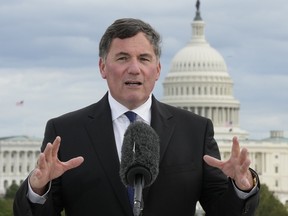Business
UPS Faces Dividend Dilemma Amid Declining Sales and Costs

United Parcel Service (UPS), a major player in global logistics since its founding in 1907 in Seattle, is now facing challenges that threaten its long-standing dividend. Once regarded as a reliable source of income for investors, the company’s dividend is under scrutiny due to a combination of declining sales and increasing operational costs in a challenging economic climate.
In 2022, UPS made a significant move by raising its dividend, a decision that now appears overly ambitious. The current yield has surpassed 6%, a figure that often signals financial strain. This situation is compounded by the fact that the company’s free cash flow has fallen short of covering the dividend payout. As a result, investor confidence in the sustainability of UPS’s dividend is wavering.
Economic Pressures and Cost Management
The economic landscape in the United States has become increasingly uncertain, marked by a slowing economy and high personnel costs. These factors pose additional challenges for UPS as it strives to maintain its dividend payments. Analysts suggest that while cost-cutting measures and restructuring efforts may provide some relief, they may not be enough to offset the prevailing economic pressures.
The potential for a dividend cut is becoming more pronounced as the company grapples with these issues. An analyst has rated UPS as a “sell” until there is a clearer indication of recovery in business momentum. If sales do not improve in the upcoming quarters, a reduction in the dividend may be unavoidable.
“The dividend hike in 2022 was too aggressive, and the risk of a reduction is high if business momentum doesn’t recover,”
noted an industry expert who closely monitors UPS’s financial health. The acknowledgment of this risk reflects the broader concerns among investors who are keeping a close eye on the company’s financial strategies.
Outlook and Investor Sentiment
As of now, UPS has not announced any formal plans to cut the dividend, but the warning signs are evident. Investors are advised to remain cautious, particularly as UPS navigates through the complexities of its operational costs and market demand. The company’s ability to adapt to these challenges will be critical in determining the future of its dividend policy.
In summary, while UPS has a rich history and a strong market presence, current conditions raise questions about its financial strategies. The combination of elevated costs and declining revenue could significantly impact its dividend sustainability, leaving investors to weigh their options carefully. As the situation develops, the focus will remain on how UPS manages these critical challenges moving forward.
-

 World3 months ago
World3 months agoScientists Unearth Ancient Antarctic Ice to Unlock Climate Secrets
-

 Entertainment3 months ago
Entertainment3 months agoTrump and McCormick to Announce $70 Billion Energy Investments
-

 Lifestyle3 months ago
Lifestyle3 months agoTransLink Launches Food Truck Program to Boost Revenue in Vancouver
-

 Science3 months ago
Science3 months agoFour Astronauts Return to Earth After International Space Station Mission
-

 Technology2 months ago
Technology2 months agoApple Notes Enhances Functionality with Markdown Support in macOS 26
-

 Top Stories1 week ago
Top Stories1 week agoUrgent Update: Fatal Crash on Highway 99 Claims Life of Pitt Meadows Man
-

 Sports3 months ago
Sports3 months agoSearch Underway for Missing Hunter Amid Hokkaido Bear Emergency
-

 Politics2 months ago
Politics2 months agoUkrainian Tennis Star Elina Svitolina Faces Death Threats Online
-

 Technology3 months ago
Technology3 months agoFrosthaven Launches Early Access on July 31, 2025
-

 Politics3 months ago
Politics3 months agoCarney Engages First Nations Leaders at Development Law Summit
-

 Entertainment3 months ago
Entertainment3 months agoCalgary Theatre Troupe Revives Magic at Winnipeg Fringe Festival
-

 Politics1 week ago
Politics1 week agoShutdown Reflects Democratic Struggles Amid Economic Concerns





















